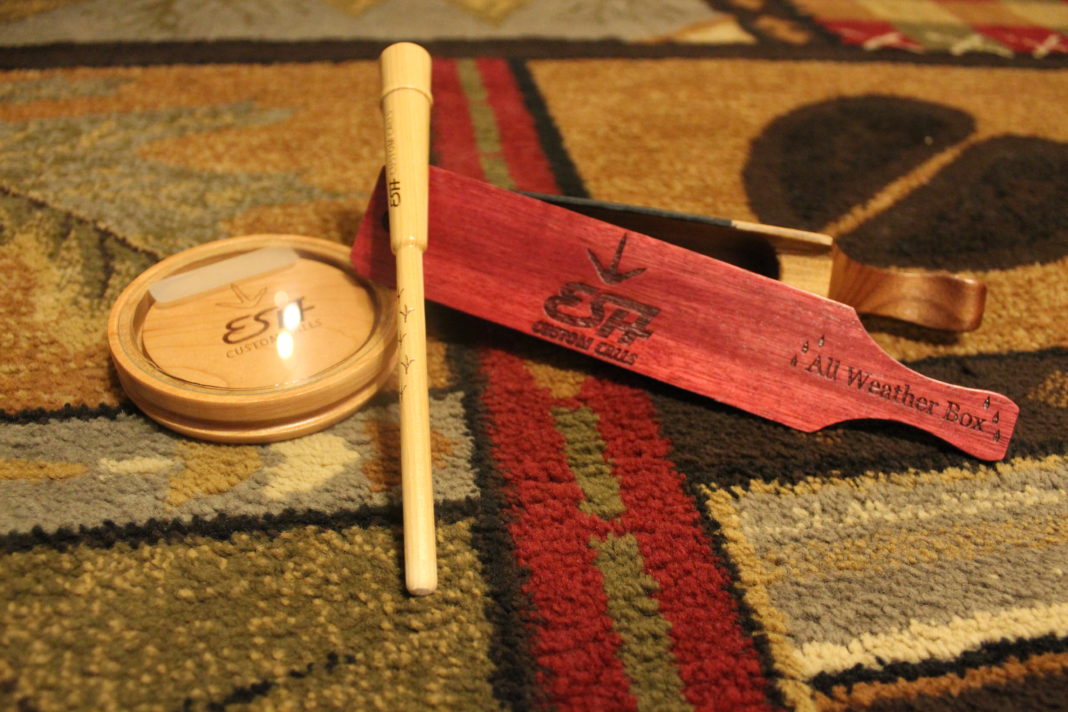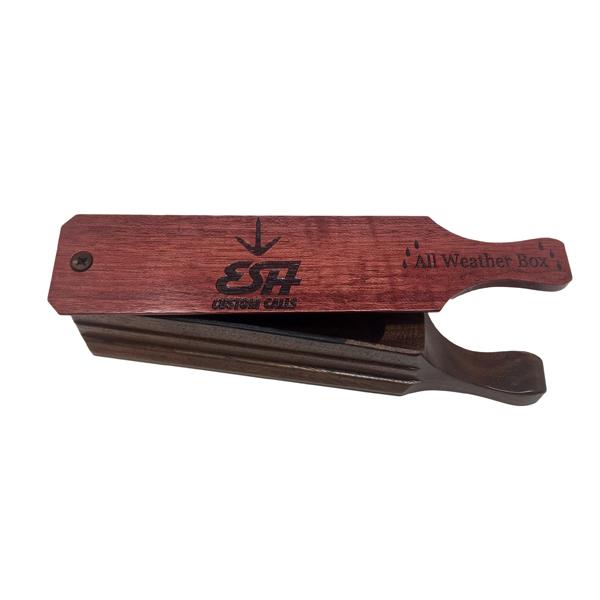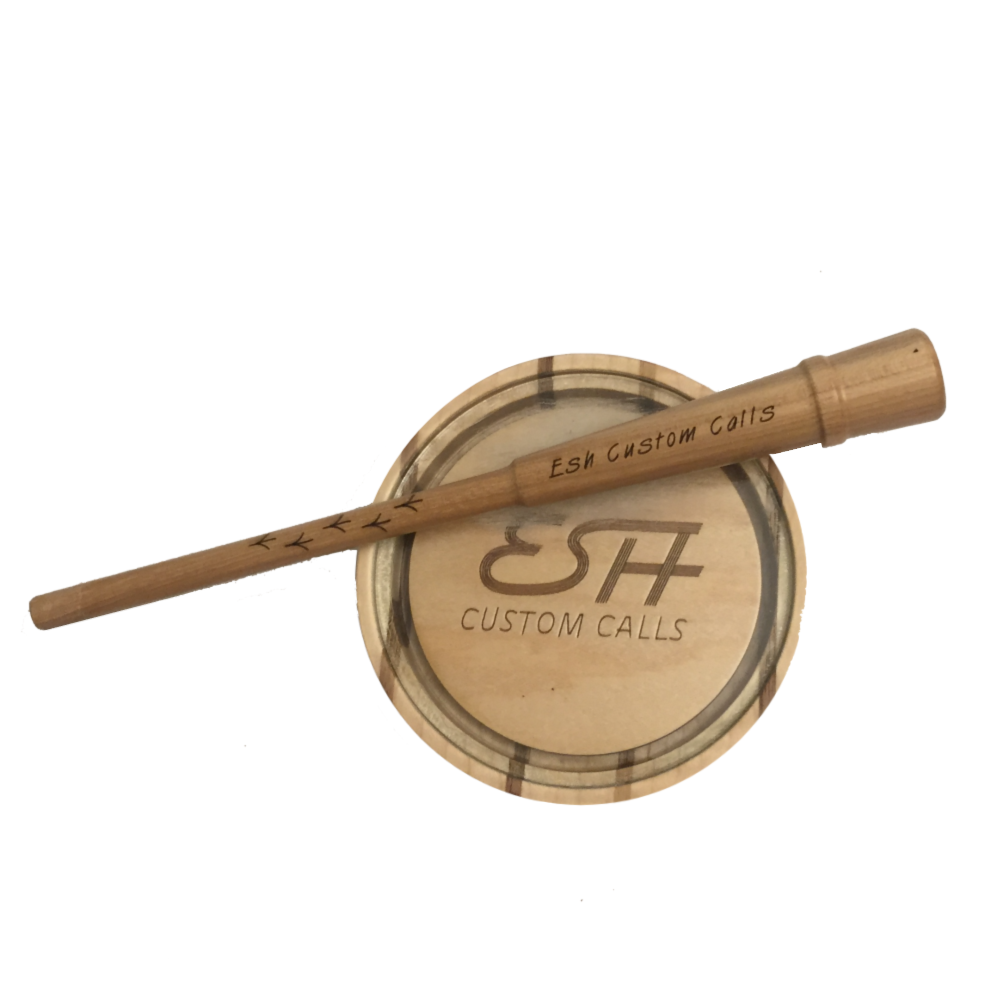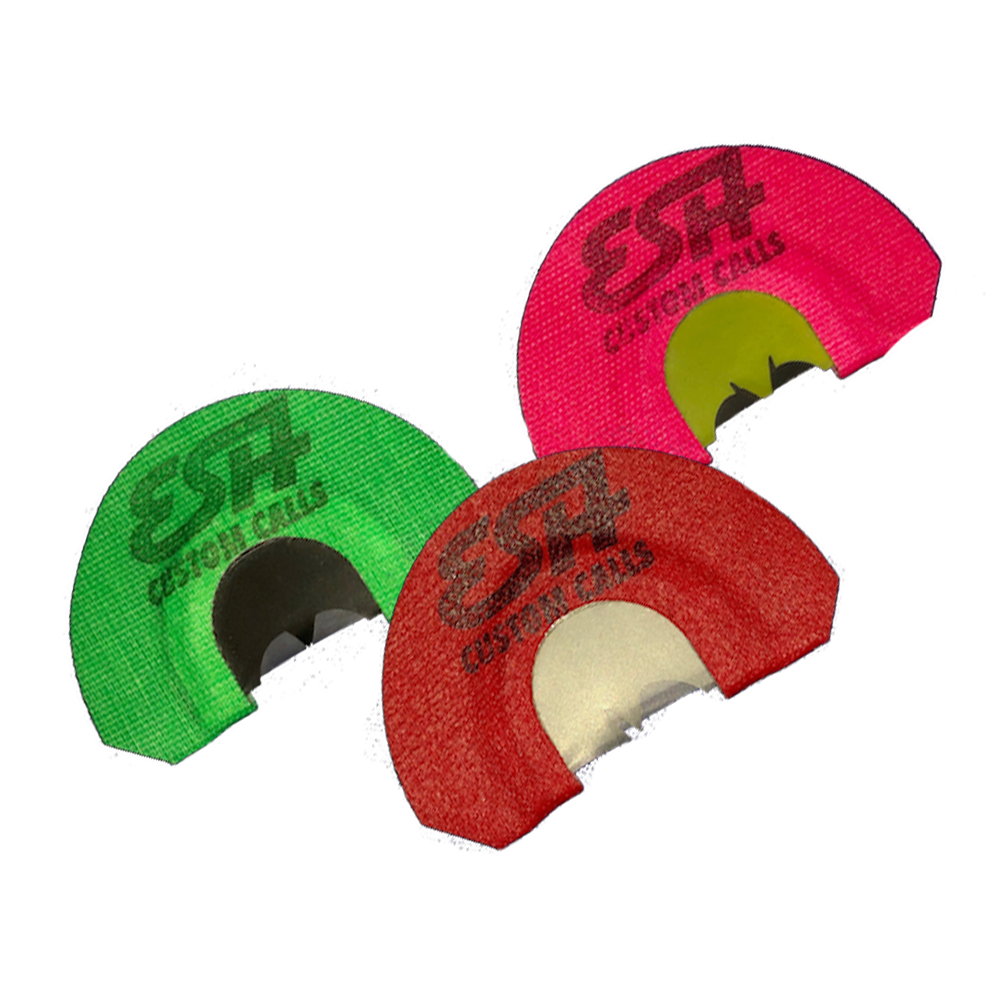Turkey hunting would be even more of a challenge than what it already is without the aid of a good turkey call. Knowing what call best suits your needs, and how to use it, will give you more opportunities when turkey hunting. This season, I have decided to use calls from Esh Custom Calls. Esh Custom Calls manufacturers box, friction, and mouth calls are easy to use and make great sounds that will fool about any gobbler.
One of the easiest calls to learn to use is the box call. Even though a box call is easy to use, it has probably resulted in more dead turkeys than any other call. The problem with the box call is that there is more movement involved with using it than I care for.
Right-handed hunters have to hold the bottom of the box horizontally in their left hand. Do not hold the sides of the call as this can ruin the sound. Do not hold the bottom of the call on the sides. To make a yelp, slide the paddle part of the call toward your hands over the top edge of the box.
There are some turkeys hunters who prefer to hold a box call vertically and work the paddle against the surface. They believe that this method gives them more control with their hands while producing a better sound.
There are many designs of box calls available to the hunter that make wonderful yelps, cutts, purrs, clucks, cackles, and gobbles. Whichever box call design you go with, always keep it chalked and dry so it sounds natural. Calling softly with a box call combined with a few clucks for 45 seconds, and waiting 20 to 25 minutes before calling again is all the calling you have to do.
Friction calls, or what many hunters call the slate call, is a round call with a slate, glass, aluminum or another metal surface. Some slate calls have a combination of these materials like glass over slate.
For the right-handed hunter, hold the friction call in your left hand with your fingers and thumb cupped around the outside edge. Hold the call waist high with a semi-firm hold. Hold the striker between your first two fingers and thumb at a slight angle with your right hand. Hold the striker to the calls surface about one-third of the way from the outside edge. To produce a yelp, apply pressure and put the striker in a counterclockwise motion, about the size of a nickel.
Added finger pressure is required on the striker for making cutts. Hold the striker firmly at an angle so the top is angled toward you when on the surface of the call. Quickly pull the striker toward your body with a good amount of pressure. Without raising the striker off the calls surface, slide the striker to the starting point and repeat the process several times. This will make a loud cutting sound that will make a mature gobbler lovesick.
Holding the striker so tight that is causes a squeaky, high-pitched sound is where most hunters have trouble when using a friction call. Hold the striker loose enough that it will allow a natural sounding yelp. With a little practice, you will begin to get the feel of how tight to hold the striker.
Do not over call! This is especially true if you are using a box or slate call that requires a lot of hand movement. Start off with soft yelps. If a tom is able to sneak up on you without being spotted, the yelps will often get the gobbler to sound off. This will give you the chance to know his location. After a few soft yelps, increase the volume for the remainder of your calling for that sequence.
Diaphragms or mouth calls are the toughest to master, but because no hand movement is involved, they are one of the favorites among turkey hunters.
Beginners should start out with a one or two reed model. They are easier to learn to use than three or four reed calls. Talk to other hunters who are proficient with mouth calls. They can tell you which is best for a beginner.
Find a diaphragm that fits snugly in your mouth. If it is too tight in your mouth, lightly trim the edges. Keep in mind that a little trimming can go a long way.
Once a hunter becomes proficient in using a mouth call and producing the entire hen vocabulary, they can give the hunter an edge in the spring woods. Their hands-free use is crucial when turkeys are close and a soft yelp or cluck is needed to get the bird just a little closer for a shot.
Do not get stuck on just one type of call. Carry an assortment with you to the woods. If a gobbler will not respond to a friction call, try using a mouth call. The change of calls might be all it takes to work in a gobbler.
Calling a mature tom to your set up with yelps, purrs, cutts, and clucks is a feeling of success for which all turkey hunters strive. Not knowing the proper techniques on how to use the different type of calls (box, friction and diaphragm mouth calls) might send a longbeard to the next county. With practice, a hunter can learn how to be the best caller who makes other turkey hunters jealous. Hopefully this advice will help you fill your turkey tag this spring, but above all, else enjoy your time.



















![The Best Deer Camp Chili [VIDEO] Deer Chili Ingredients, Tomatoes, Chili Spices](/wp-content/uploads/2015/10/Deer-Chili-Deer-Camp-Recipe-218x150.jpg)
![How to Call Elk Early in the Season [VIDEO]](/wp-content/uploads/2016/08/byers003-218x150.jpg)







![Idiots Disturb Hunter: How Would You Have Handled It? [VIDEO]](/wp-content/uploads/2015/10/DSC00110-e1474487693878-100x70.jpg)
![Albino Buck Shocked to Shed His Antlers [VIDEO]](/wp-content/uploads/2015/10/AlbinoDeer-100x70.jpg)